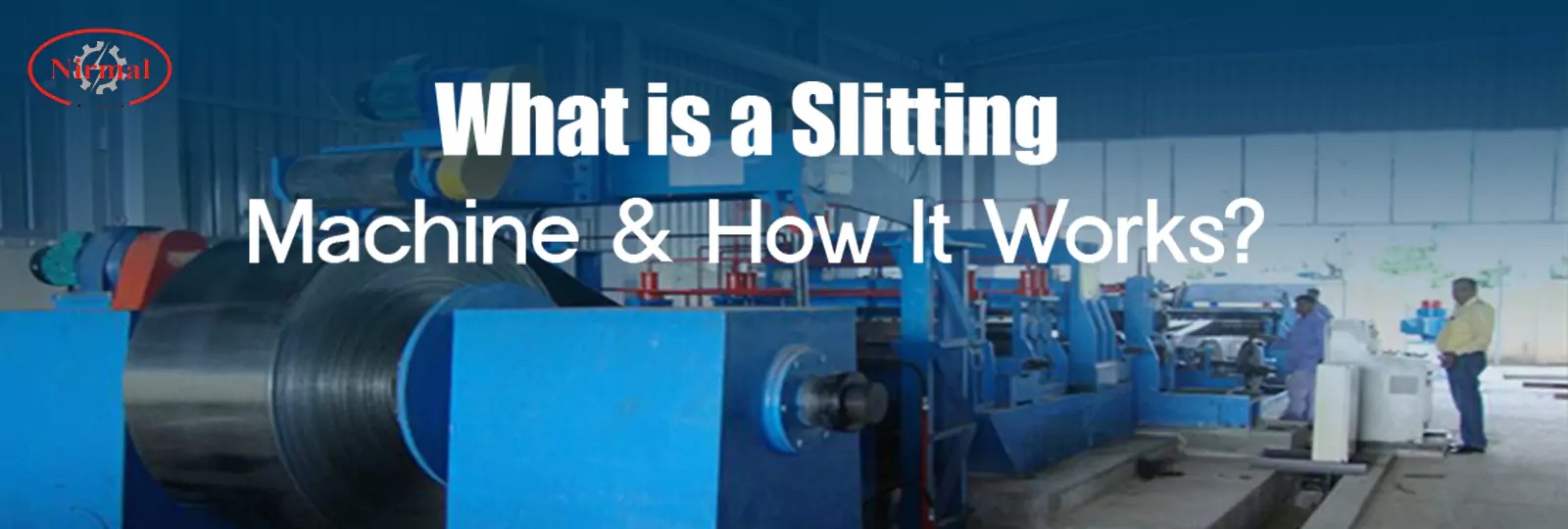
Imagine industries like packaging, metal processing, and textiles running without precise cutting solutions. It would lead to inefficient material usage, increased costs, and production delays. This is where slitting machines play a crucial role.
An industrial slitting machine is a piece of equipment that slices large coils of material down into smaller strips, requiring precision. It’s one of the most used software across industries that deals with paper, plastic, metals, and textiles to keep the operations running with minimal waste.
In this blog, we will discuss what is slitting machine, how does slitting machine work, different types of slitting machine and the advantages of using it. This guide, written for individuals who work in manufacturing, those who are simply interested in industrial machinery, will help familiarize you with slitting machines.
What is a Slitting Machine?
The slitting machine is the unique tool which is used to cut the wide rolls into the narrow precise widths. Industries that require custom sizes of materials for processing or packaging heavily rely on this process.
Such machines are commonly used for:
- Packaging Industry – Slitting/rewinding of plastic films, paper, emulsions, laminates etc.
- Metal Industry – Slitting sheets of steel, aluminium, and copper.
- Textile Industry – Fabrics and non-woven material cutting
- Printing – Processing paper and labels.
Slitting machines enhance efficiency through automation, precision cutting, and waste reduction. Nirmal Overseas has modern models with automation features for enhanced productivity.
How Does a Slitting Machine Work?
One of these steps is slitting, where the material is sliced into smaller shards, which is done in a way that it remains unaffected as the material passes through the machines. Here is a step-by-step explanation of how slitting machines work:
Material Loading
The process starts with laying the large roll (mother roll) on the unwinder. This roll contains the material to be slit. However, without proper alignment at this stage, no matter how you see, you won’t get even cuts.
Cutting Mechanism
It passes through a set of blades that chop it into smaller strips. Different cutting techniques are used depending on the material type:
- Rotary Blades – Great for achieving speed and razor-edged cuts.
- Razor Blades – Used for soft materials such as plastic films and paper.
- Shear Blades – Ideal for more difficult materials such as metal sheets.
Tension Control
Tension control systems regulate the proper pressure to avoid deforming the material while it passes through the slitter. This guarantees clean, even cuts.
Rewinding Process
The new smaller rolls are then rewound on separate shafts after being cut. It neatly winds the final product for packaging or further processing.
In advanced slitting machines, this entire process is automated, making slitting not only an accurate step but also an efficient one.
Types of Slitting Machines
Different types of slitting machines exist because different industries require their slitting technique. Most Common: Here are the most common:
Roll Slitting Machines
- It can be used for cutting large roll of materials such as plastic films, paper, textiles, etc.
- Widely used in printing and packaging industries.
Sheet Slitting Machines
- Intended for cutting metal sheets and similar thick materials.
- Used in industries such as construction and automotive manufacturing.
Razor Slitting Machines
- Cutting uses sharp razor blades to cut soft materials such as thin plastic films
- Provides clean and accurate lines and edges.
Shear Slitting Machines
- Two rotary cutting blades for cutting hard materials such as steel and aluminium.
- Delivers a smooth, burr-free cut.
Score Slitting Machines
- Instead of slicing through, it instead breaks the material under pressure along the predefined lines.
- Frequently used in corrugated boards as well as packaging materials.
Advantages of Using a Slitting Machine
Some of the advantages of slitting machines improving manufacturing efficiency and product quality are:
Precision Cutting
Such machines can also cut with uniform width and smooth edges, and this results in a more reliable product for use in subsequent processes.
Increased Efficiency
The process of cutting using these machines is automated, which not only takes less time but also eliminates the need for manual labour, enabling businesses to pace up their production.
Minimal Material Wastage
Slitting machines also help to reduce waste by utilizing optimized cutting technology thus making the process cost-effective, sustainable, and economical.
Versatile Applications
From paper and plastic to steel and fabric, slitting machines are capable of working with a wide range of materials, making them an invaluable investment across multiple industries.
Improved Safety
Enhanced safety: New slitting machines incorporate safety measures like automatic blade guards and emergency-stop features, minimizing accidents in the workplace.
High-Speed Production
High-speed slitting machines are beneficial for industries that continue bulk production; they are faster but do not compromise accuracy.
Integration with Automation
Software from Nirmal Overseas also runs modern slitting machines much more effectively than manual handling or old paper and pen setting processes.
Conclusion
Slitting machines are vital to modern manufacturing, providing precision, efficiency, and versatility across industries. From paper and packaging to metal and textiles, these machines are speeding up and reducing the cost of material processing.
At Nirmal Overseas, we are engaged in manufacturing high-performance slitting machines that enable industries for better productivity, improved quality control, and lower operational costs. We use state-of-the-art technology to build our machines, so you know you are going to get the best results time and time again!
We hope that, if you’re in need of a slitting machine that can be relied on, we can help you find the right appliance for the job. The right machine will offer ways to increase efficiency, maximize the use of material and, reduce production time, hence is one of the most vital tools in any manufacturing plant.
